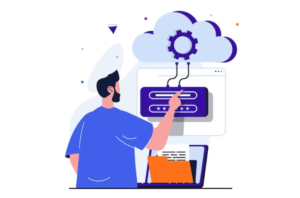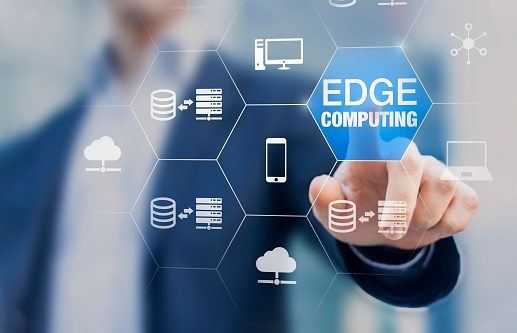More details on Cloud Management Platforms - Gartner and the Magic Quadrant
In today's fast-paced tech world, cloud computing has become an integral part of the business landscape. Proper management and utilisation of cloud resources have never been so important. This is where cloud management platforms come into the picture to oversee your cloud deployments. So what are cloud management platforms?
Imagine you have multiple cloud platforms like Google Cloud Platform, Microsoft Azure, and AWS for managing your cloud resources. It would become challenging to handle each platform with its interface and APIs. This is where cloud management platforms come into the picture. Cl
These platforms provide businesses with a unified control centre for managing cloud resources.
These platforms allow businesses to optimize cloud usage, enhance performance, and ensure security and compliance. The question is, how can businesses choose a cloud management platform that meets all their needs? This is where Gartner and its magic quadrant come into play. Garnet Magic quadrant provides businesses with valuable insights on different cloud management platforms so they can make informed decisions.
In this article, we will explore the methodology behind Gartner's Magic Quadrant, the significance it holds in the market, and the crucial role cloud management platforms play in the ever-evolving technology landscape. Additionally, we examine the implications of the newly public Magic Quadrants and their impact on both vendors and buyers in the cloud management platform market. We will also explore Nife Labs and how it can help developers manage scale and deploy applications on the cloud.
Overview of Gartner's Magic Quadrant for Cloud Management Platforms#
Gartner is a research and advisory firm that publishes reports on technology to help businesses make informed decisions. Magic Quadrant is one of the most popular and useful tools by Gartner. Gartner's analysts conduct extensive research on cloud platforms to identify key players. They gather information from vendor briefings, customer feedback, and product demonstrations. Gartner evaluates a platform based on many factors including scalability, ease of use, features, security, performance, market presence, and integration with other services. Gartner also takes into account other important metrics like pricing models, customer satisfaction, and vendor support.

After evaluation, cloud management platform vendors are divided into 4 categories based on their execution and completeness of vision. These categories are leaders, challengers, visionaries, and niche players. Being positioned as a leader in Gartner Magic Quadrant is like receiving an award. It signifies that the vendor has a clear vision and ability to execute it. Magic Quadrant guides businesses in their quest of finding a suitable cloud management platform for their business.
Current Landscape and Market Trends#
The CMP market is growing as more and more organizations are leveraging multiple cloud platforms for the benefit of different services. According to a report by Valuates, the global market of cloud management platforms is expected to reach USD 23,896.08 Million by 2028.
The CMP market is evolving rapidly with the emergence of new technologies and trends that enhance the capabilities and performance of CMPs. The technologies and trends include artificial intelligence(AI), machine learning (ML), Edge Computing, automation, and containerization. All these latest technologies and trends help vendors improve their performance and increase customer satisfaction.
Analysis of the Newly Public Magic Quadrants#
Magic Quadrant publishes more than 100 reports every year on different technologies, evaluating hundreds of vendors. Most of these reports are only available for premium members but some are made public for free. These reports give valuable insights into technology providers in a specific market.
In this section, we will analyze the newly public magic quadrant report on cloud management platforms. We will discuss the changes and updates in the new public report. We will also discuss the implication for businesses and vendors in the market.
Changes and Updates in the Magic Quadrant#
The newly public magic quadrant report on cloud management platforms is the 3rd edition in the series. Several important changes have been made in this new report. These changes reflect changing market needs. One of the important changes in this new report is the change of evaluation criteria for cloud management platforms. Gartner has increased emphasis on multi-cloud support, automation, and governance capabilities. Gartner's revised evaluation criteria reflect the sentiment of the market. Organizations need CMPs that provide consistent management across different platforms and provide automation and governance capabilities to reduce complexity and risk.
Another important change in the report is the inclusion of emerging technologies and trends. Gartner has included important technologies like artificial intelligence (AI) and machine learning (ML). These technologies improve the functionality of cloud management platforms by providing features like bug detection, root cause analysis, and analytics.
Key findings and insights from the latest Magic Quadrant#
The newly public Magic Quadrant report on CMPs features 11 vendors. This report gives valuable insight into the market. VMware, IBM, Microsoft, and BMC Software are named Leaders. These vendors have strong vision and execution capabilities. These vendors have multi-cloud integration, automation, and governance capabilities. These vendors have a large market share and high customer satisfaction. These vendors have the ability to influence the direction and standards of the market.
Cisco and Flexera are named challengers. These vendors have strong execution capabilities but lack vision. They provide limited CMP solutions that focus on specific sections of the market. Their market share and customer base are moderate. These vendors are reliable for standard multi-cloud scenarios. These solutions can compete with Leaders by working on their vision.
Morpheus Data, Scalr, and Embotics are named Visionaries. These vendors have strong vision and innovation capabilities but lack execution capabilities. They provide unique CMP solutions that address emerging needs. These vendors have a small market share but high customer satisfaction. These platforms are suitable for complex multi-cloud scenarios. The vendors can become leaders by improving their execution and increasing their market presence.
CloudBolt Software and HyperGrid are named Niche players. These vendors provide CMP solutions for specific niche needs. These vendors have a small market share and moderate customer satisfaction. These platforms are suitable for niche multi-cloud scenarios. These vendors can improve their market position by expanding their functionality.
Implications for Vendors and Buyers#
The changes and updates in the latest version of the Magic Quadrant for CMPs have implications for both vendors and buyers.
Due to the inclusion of emerging technologies and trends, there have been some shifts in the positioning of various vendors in the magic quadrant. Some vendors have completely dropped out from the magic quadrant while others have improved their positioning. Microsoft Azure, for instance, has improved its position from challenger to leader in the quadrant while Embotics has slipped from leader quadrant to visionary over the years due to a lack of adaptability. Microsoft has a clear vision and has the ability to deliver on its vision. Moreover, it supports multi-cloud and has automation and governance capabilities. These changes in vendor positioning indicate the importance of adapting to changing market needs.

The latest Magic Quadrant report identifies Leaders, Challengers, Visionaries, and Niche Players in the cloud management platform market. Leaders demonstrate strong execution and a comprehensive vision, offering robust multi-cloud management capabilities. Challengers and Visionaries excel in either execution or vision, while Niche Players provide specialized solutions for specific use cases. These findings help organizations understand vendor positions, strengths, and market trends, aiding them in selecting the right cloud management platform for their needs.
Introducing Nife Labs: A Cloud Computing Platform#
Nife Labs is a global edge application platform that empowers enterprises and developers to rapidly launch their applications on any infrastructure. It is a cloud computing platform designed to facilitate faster deployment, effective scaling, and ease of management. Here are some key features of the platform.
Rapid Application Deployment:
Nife Labs simplifies the process of deploying applications by providing a streamlined interface. Enterprises and developers can quickly launch their applications on any infrastructure, regardless of the underlying cloud platform.
Effective Scaling:
With Nife Labs, businesses can seamlessly scale their applications based on demand. The platform supports efficient scaling across multiple regions, taking into consideration factors such as network routing and quick application instantiation. This ensures optimal performance and availability, even in geographically distributed environments.
Ease of Management:
Nife Labs offers user-friendly management capabilities, making it easier for enterprises to oversee and control their cloud applications. The platform provides tools for monitoring application performance, generating reports, and setting up alerts. This enables organizations to proactively identify issues, optimize performance, and ensure smooth operations.
Business Advantages of Nife Labs:#
Faster Deployment and Time-to-Market:

Nife Labs enables rapid deployment of applications, allowing businesses to bring their products and services to market more quickly. By automating key tasks and providing a simplified deployment process, Nife Labs reduces the time and effort required for application deployment, giving enterprises a competitive edge.
Cost Optimization:
Nife Labs offers a cost-effective solution for application deployment and management. By leveraging the platform's capabilities, businesses can avoid excessive infrastructure costs and reduce the need for extensive manual intervention. This results in cost savings and improved resource allocation.
Cloud Management Platform for Nife:#
While Nife Labs is not a cloud management platform itself, it can be effectively managed through a cloud management platform. By integrating Nife Labs with a cloud management platform, enterprises can benefit from centralized management, resource allocation, and control over their cloud computing infrastructure. This integration allows businesses to leverage the advanced capabilities of Nife Labs while benefiting from the comprehensive management features provided by a cloud management platform.
Try Nife Labs for seamless cloud application deployment and management.
Conclusion:#
In conclusion, Gartner's Magic Quadrant holds significant influence and guidance for both vendors and buyers in the cloud management platform market. It provides valuable insights into the competitive landscape and helps organizations make informed decisions. As the market evolves, the newly public Magic Quadrants bring updated criteria and considerations, reflecting emerging technologies and trends. Cloud management platforms play a crucial role in managing and optimizing cloud infrastructure, and Gartner's Magic Quadrant serves as a compass for navigating this ever-changing landscape. Future developments in the Magic Quadrant will continue to shape the industry and drive innovation.


